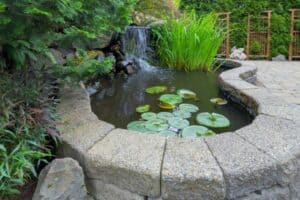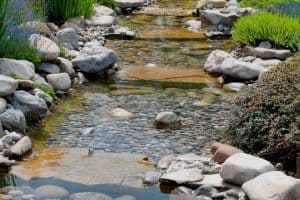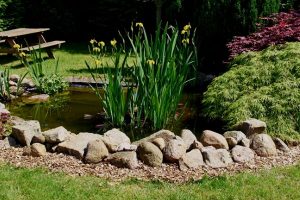Adding a small lily pond to your backyard can beautify your yard and make it a tranquil place to relax.
Water lilies are beautiful pond plants that not only look good, they also have many benefits for garden ponds.
They provide shade and protection for fish, keep the pond cooler during the hot summer months and help to reduce algae overgrowth.
Here’s how to create a beautiful lily pond in your backyard.
This post contains affiliate links. Please read the disclosure for more info.
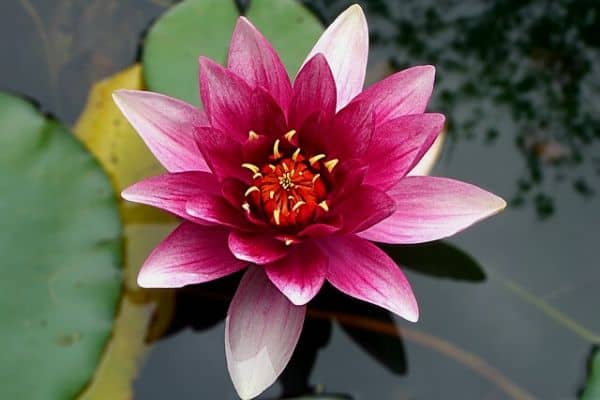
Building the pond
One of the easiest ways to create a lily pond is to use a preformed pond.
They’re fairly easy to install – just dig a hole a bit larger than the shape of the pond, put it in place and backfill the hole with soil.
You can also use a flexible pond liner to line the pond but you need to be more precise when digging the hole.
Once your pond liner is in place, you can arrange the rocks around the edge to give it a natural look and fill the pond with water.
If you don’t have enough space in your backyard for a pond, you can plant dwarf water lilies in an above ground pond
or even an old bathtub.
Dwarf water lilies only need about a foot (15 cm) of water to grow.
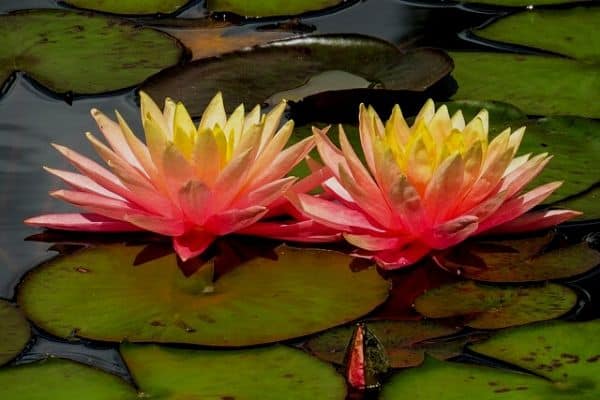
Choosing water lily plants
Water lilies are available in hardy and tropical
varieties.
Hardy water lilies are best for areas that have cool winter temperatures.
They bloom from spring until fall and become dormant in the winter.
The flowers only open during daylight hours and each flower lasts for about four days.
Tropical water lilies are best for warm tropical and subtropical areas but in cool climates they can be grown as annuals and replaced each year.
The flowers are usually bigger and brighter than the hardy varieties but they require a water temperature that is above 70°F (21°C).
Water lilies grow best in full sun but some varieties will tolerate partial shade.
The flowers are most commonly pink or white but you can also find purple, yellow and red varieties. [1]
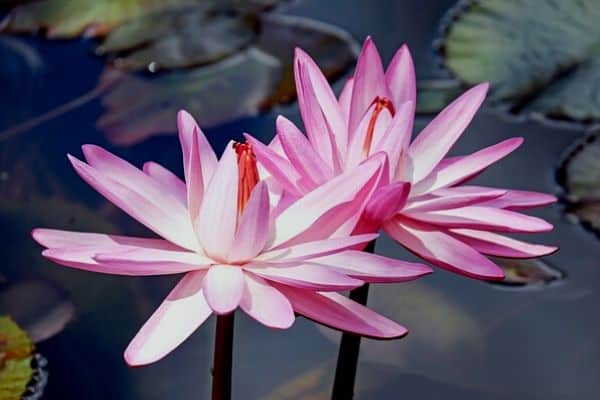
Planting water lilies
Water lilies should be planted in soil that is clay based. Don’t use potting mix because it’s too light and will float out of the pot when you place it in the pond.
Choose a large pot that will accommodate the tubers as they grow.
It doesn’t need to be a decorative pot because no one will see it on the bottom of the pond.
It’s a good idea to cover the drainage holes because the soil can leach out and make the pond water dirty looking.
Cover the soil with small pebbles or gravel to help keep the soil in the container.
Thoroughly water the pot and slowly lower it into the pond to give it time to fill with water.
If your pond is deep, you may need to place a few bricks or an upturned pot underneath your container.
You can pot up a few water lily plants of different colors to create a stunning display.
Keep the water lilies away from waterfalls, fountains and water features because they don’t like to be constantly splashed with water.
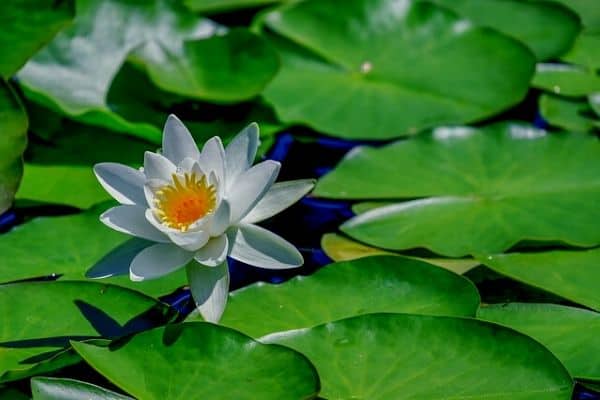
Adding other plants to a lily pond
Lotuses are beautiful companion plants for water lilies.
They bloom later in the year than water lilies (usually from summer to fall) because they require several weeks of warm temperatures before they start to bloom.
It’s best to avoid adding floating plants like water lettuce and water hyacinths to a lily pond because they spread out very quickly and can take over the pond if you don’t cut them back regularly.
Adding fish to a lily pond
Water lilies are excellent for providing shade for fish and their large round leaves help the fish to hide from predators.
Goldfish are ideal for a small lily pond but if you have a larger pond you could add some beautiful koi to your pond.
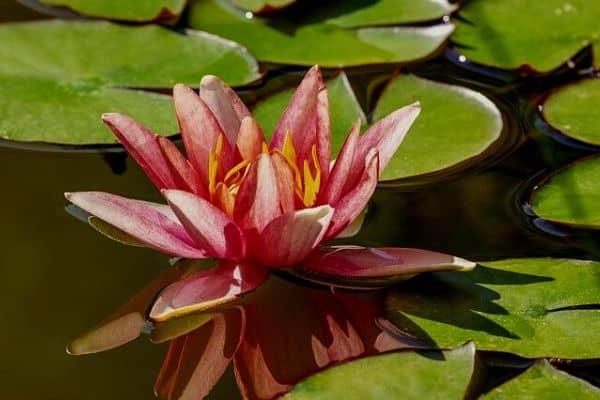
Water lily maintenance
Regularly fertilizing your water lilies with slow release fertilizer tablets will help them to flower profusely.
It’s best to avoid using algaecides in the pond because they can damage water lilies and other pond plants.
If your pond becomes overgrown with algae, try a chemical free solution like a UV clarifier to remove the algae naturally.
Read more in this article: How To Fix Green Pond Water
Overwintering water lilies
Hardy water lilies don’t need a lot of care over winter.
Just cut back any yellowing or dying leaves and submerge the pot in a deep part of the pond where the water will stay warmer over winter.
If you’re worried about the pond freezing, you can use a pond de-icer or pond heater over the winter months.
Tropical water lilies generally don’t tolerate cold winter temperatures and need to be moved indoors before the frost hits.
So there are my tips for creating a backyard pond with lilies.
I hope this has inspired you to make your own beautiful lily pond at home.
RELATED ARTICLES
- Hardy vs Tropical Water Lilies
- How To Overwinter Pond Plants
- How To Grow Water Hyacinth Flowers
- 10 Flowering Pond Plants
- 6 Edible Water Plants
Do you have any questions? Let me know in the comments below.
Are you on Pinterest? I have boards dedicated to Garden Ponds and Pond Plants that you may find interesting.
Don’t forget to pin this post so you can come back to it when you’re ready to start building your backyard lily pond.


